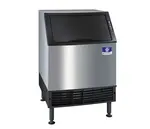
While a winery might seem like one of the most relaxing and romantic places to be, setting up a winery and getting it to run successfully takes a lot of hard work and effort. If you’re thinking about opening a winery, you’re at the right place. Several enthusiasts and investors alike think about starting a winery business. So, how to open a winery and make your operation a recognizable brand in this competitive market? We tell you exactly that in the sections to come. A winery business is not only competitive but also capital intensive. Opening a winery is followed by waiting for at least 2 to 5 years before an owner can think about bringing in positive revenue.
While these facts might seem demotivating, there are several bright sides to opening a winery business in today’s market. With wine sales showing nearly 17% growth in the previous year itself, new business owners can bring much-needed innovation and diversification into the winery industry, allowing them to market to more consumers. Read on as we discuss the various factors that will help you understand how to start a winery business and how you can be successful at it.
What is a Winery?
So, what is a winery? A winery is an establishment where grapes are processed and fermented to make wine. A lot of people often end up confusing a vineyard with a winery, however, the former is where the grapes are grown, whereas a winery business is where the grapes are sent after harvest. Now, several vineyards have wineries situated either on their land or close to the property to make it easier to transport the fresh grapes. These wineries are often associated with the vineyard or have the same owner. However, there also exist several winery businesses that buy their grapes from several different vineyards and farmers. Such wineries are easier to operate and quicker to break even from since you don’t have to worry about the various factors that affect the growth and harvest of grapes. Most wineries offer varying levels of wine production, these include:
- Growing their own grapes and producing their wine
- Procuring grapes from other businesses and producing wine
- Hosting guests and marketing wine
Most wineries either operate on a combination of the above three characteristics or stick to one of them. Selecting a mode of operation will be the first step in understanding how to open a winery.
How to Start a Winery Business? The Initial Steps
Here are some of the initial steps and considerations to make when you’re starting a wine business:
- Determining the type of your winery: It’s important to determine the type of wine-making business you want to run before you go about making arrangements for other aspects of your winery business. The requirements for various wineries are different. If you’re thinking of growing your own grapes, you will also need to take into account the farmland required to cultivate grapevines. Alternately, if you only intend to produce wine, you must understand the various types of winery equipment required for your business. If you’re merely thinking about hosting wine tastings and marketing wine out of your winery, you need to focus on various aspects of marketing wine. Also, all winery owners must understand what is a wine cooler and other specialized storage options for winemakers to ensure their offerings remain intact.
- Seek out potential locations: Your winery business requires a location to operate from. If you’re considering farming the grapes yourself, you will need to take into account several other factors. Since grapevines are fickle and fragile crops, they grow only in specific soil types and climates. Several winemakers have even started their wine businesses from their backyards, so it all burns down to the kind of land and soil quality you will be dealing with. Buying your grapes from other grape farmers provides you with more flexibility concerning your business and simplifies the process of evaluating how to open a winery business. However, it then becomes important to place your winery close to grape farms to ensure you source freshly picked grapes.
- Draw up a business plan: A business plan will be the guiding document for your business in the years to come. Make sure it isn’t too rigid and can be optimized to face different challenges during operations or when you’re expanding your business. A solid business plan also allows you to strike up investor confidence. Business plans are also analyzed by banks when they’re deliberating over your business credit application. Ensure you invest time in writing a detailed business plan for your winery.
- Understand the licenses involved: The wine business is a heavily regulated industry and comes with several licenses and permits that need to be obtained before you can open your doors to eager wine connoisseurs. Wine regulations are among the most complex, and there exist several legal firms that assist potential wine producers to navigate the various legalities surrounding the business.
- Structure a budget: A winery is an expensive business venture. You don’t want errant costs ruining your business plan when you already have hundreds of thousands of dollars invested in the winery, so it’s important to draw up a budget and stick to it. If you’re growing your own grapes, calculate the land price for the farm, and the maintenance costs per acre of land. This will give you the initial investment for the land and its running costs. Also, take into account equipment costs. You will require several processing tools and wine coolers to produce and store wine, alongside barrels and storage cellars. It’s also important to consider a number of options to operate your business while your first batch of wine is still aging. You can either buy grapes and process them for the first 2 years to bring in revenue or offer a wine tasting experience to potential buyers.
Points to Consider When Cultivating Grapes
Here are some factors you need to pay attention to before you begin cultivating the first crop of grapevines:
- Understand the climate: Grapevines grow best in moderate climates - where the nights are not too cold, and the days not too warm. They’re often planted after the last freeze and picked before the first. Understand when the freezes come.
- Analyze the soil: Grapes grow well in mildly acidic soil that isn’t too packed with nutrients.
- Terrain: Vines are best suited to slopes that receive ample sunlight.
- Understand how much you need to harvest: About a gallon of wine is produced by processing 20 pounds of grapes. So it’s important to calculate how much you can grow on your plot of land to meet demands.
- Choose the variety of grapes: It’s important to analyze what variety of grapes will grow best in your climate type.
Points to Note to Run a Successful Winery
Here are some points you must remember if you want to operate a successful winery business:
- It’s important to design the winery and retail area aesthetically to provide a good experience to patrons. Most of your revenue will come from wine tasting.
- Focus on marketing your winery and come up with unique themes to cut out a niche for yourself.
- Always stick to the state and local regulations when selling wine.
- Consider offering additional services such as food service, event hosting, and wine-making workshops to make the experience more interactive for your guests.
- Use quality equipment in your winery to support operations. There is no replacing a high-end ice maker or commercial refrigerator in an operation as high-stakes as a winery.
Now that you have an understanding of how to start a wine business, it’s time to get out there and begin hunting for locations for your winery!













